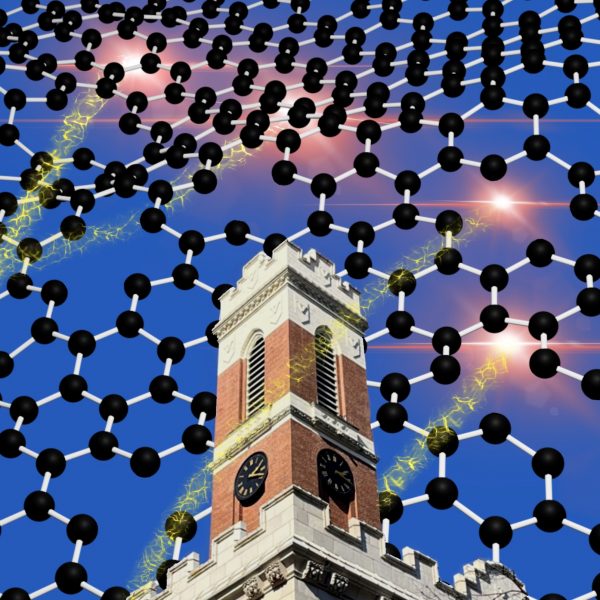Vanderbilt’s excellence in nanoscale science and engineering research was recently featured in a special themed collection of Nanoscale Horizons, Nanoscale and Nanoscale Advances celebrating the university’s 150th anniversary.

An editorial about the research was published in March in the “Royal Society of Chemistry.” It was written by De-en Jiang, professor of chemical and biomolecular engineering; Sharon M. Weiss, Cornelius Vanderbilt Chair in Engineering and professor of electrical and computer engineering; and Janet Macdonald, associate professor of chemistry at Vanderbilt.
“We wish to celebrate this milestone by presenting some of the remarkable tapestry of intellectual exploration and ground-breaking research in nanoscience and engineering which underpins the technological advances of today, from nanomaterials to microelectronics to nanomedicine,” the researchers wrote of the 22 papers included in the assemblage. “This collection serves as a snapshot of the nanoscale science and engineering research from Vanderbilt faculty, alumni, and collaborators in 2023–2024.”
In their highlights, the researchers particularly noted the successes that have come from collaborations. For instance, they pointed out how the Macdonald Research Group and the Caldwell Nanophotonic Materials and Devices Lab worked together to reveal the important role played by oleate, a widely used capping agent, in controlling the phases of metal sulfide nanoparticles. Another example included the Wilson Lab’s collaboration with Vanderbilt University Medical Center and other institutions to invent a novel approach to engineer polymer-based endosomolytic nanocarriers for delivery of molecular therapeutic cargo.
Additionally, the researchers also noted the importance of the Vanderbilt Institute of Nanoscale Science and Engineering (VINSE), a multi-disciplinary institute that supports research, education, and K-12 outreach across science, engineering, and medicine.
“This vibrant institute and its 55 faculty members from across the campus are the engine of breakthrough nanoscale research at Vanderbilt,” they wrote.
The back cover of the special issue featured a paper from the research group led by Piran Kidambi, assistant professor of chemical and biomolecular engineering and mechanical engineering, that demonstrated scalable and effective approaches to interface atomically thin 2D materials (graphene) with proton conducting polymers for advancing fuel cell membranes in efforts towards sustainably decarbonizing transportation.
Kidambi’s group conceptualized and designed the cover art for the issue that shows protons zipping through defects in atomically thin graphene as fireworks celebrating Vanderbilt’s 150 years. Senior chemistry major Thomas Knight made the artwork in collaboration with graduate students Nicole Moehring and Andrew Naclerio, and postdoc Pavan Chaturvedi, all of whom helped with the concept.
Contact: Lucas Johnson, lucas.l.johnson@vanderbilt.edu